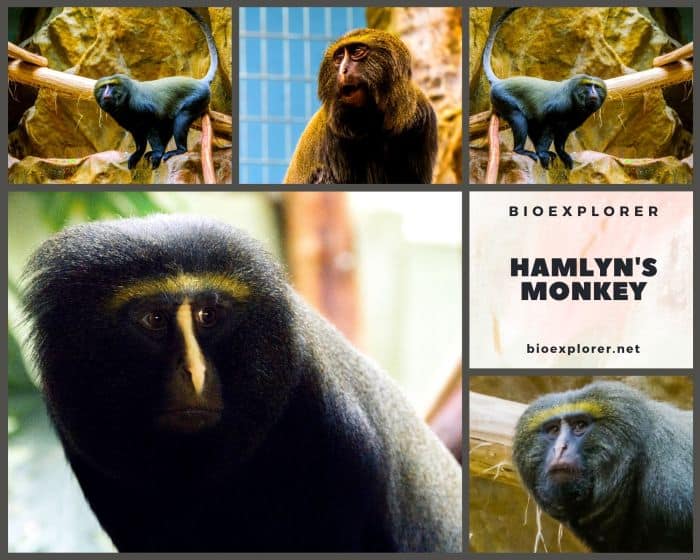
| Animalia | Primates | Cercopithecidae | Cercopithecus | Cercopithecus hamlyni |
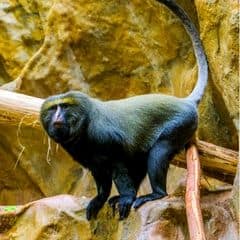

- Common Name: Hamlyn’s Monkey
- Taxonomy Classification Year: 1907
- Monkey Size: 40 to 65 cm (15.75 to 25.6 in)
- Skin Color(s): Olive gray and black
- Habitat: Rainforest
- Diet: Herbivorous
- Native Countries: Democratic Republic of Congo
Hamlyn’s Monkey Distribution
Hamlyn’s Monkey Characteristics
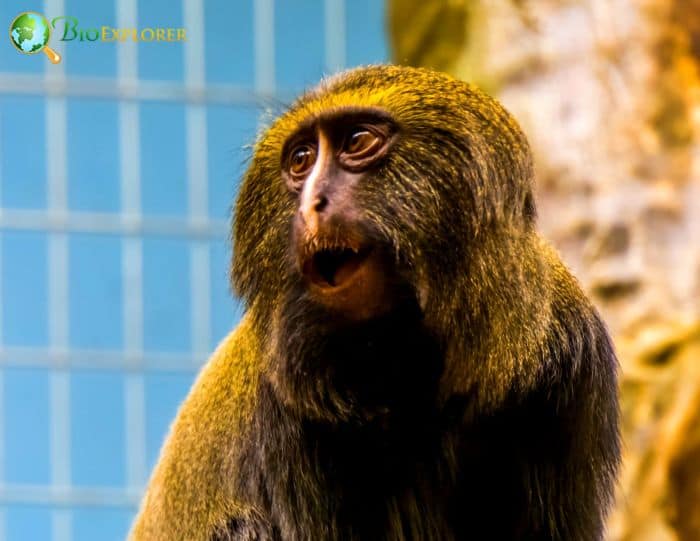
The Hamlyn’s monkey[1] (Cercopithecus hamlyni), also called the owl-faced monkey, is an Old World monkey inhabiting the Congo’s bamboo and primary rain forests.
- The fur of an adult Cercopithecus hamlyni is black and olive-gray. The fur is darker on the lower abdomen, hind legs, and arms.
- An olive-gray tint appears on the backs of adults. Their almost monotonous fur makes them almost invisible to predators.
- The fur of these animals is long, thick, and delicate. However, the face of an adult Hamlyn’s monkey is its most distinctive feature.
- These primates have a horizontal stripe across the forehead and a vertical stripe from the center of the forehead to the lip area.
- These two bands vary in color from creamy yellow to white, forming a T-shaped facial marking.
What Eats Hamlyn’s Monkey?
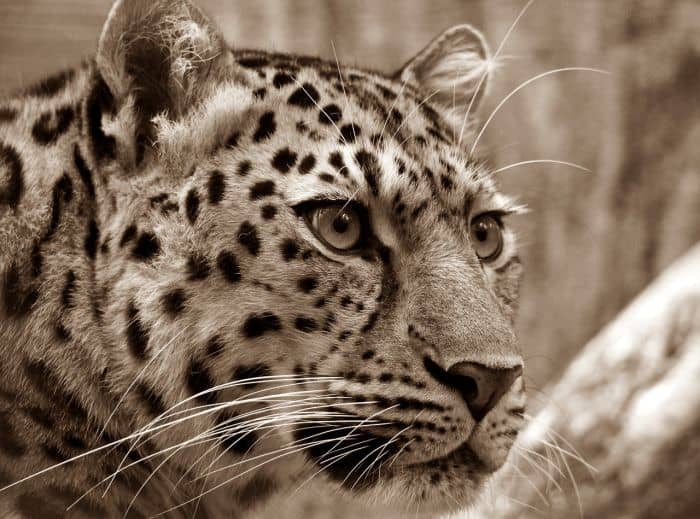
In the wild, Leopards (Panthera pardus) predate on Hamlyn’s Monkeys[§].
Hamlyn’s Monkey Facts
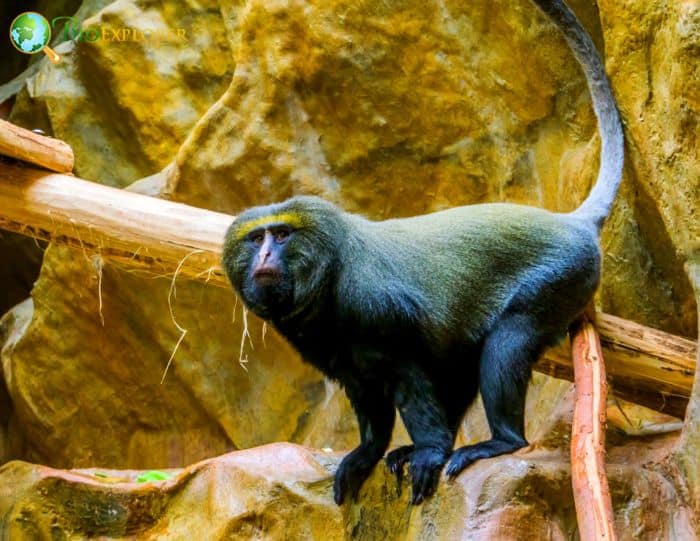
- Hamlyn’s monkeys have unique feet and hands in elongated phalanges. These allow them a firm grip, a practical adaptation for traveling on wet bamboo.
- Adult male and female species have bare, blue-skinned genital regions and buttocks.
- They live in groups of fewer than 10 individuals. Within these small groups, there is only a dominant male species.
- Hamlyn’s monkeys mark their territory with their scent to maintain their home range.
- Vocal communication is an orientation guide and source of belonging in this dense habitat.
Suggested Reading: All Types of Monkeys | Black Leopard Fun Facts
Cite This Page
APA7MLA8Chicago
BioExplorer.net. (2025, October 29). Hamlyn’s Monkey. Bio Explorer. https://www.bioexplorer.net/animals/mammals/monkeys/hamlyns-monkey/.
BioExplorer.net. "Hamlyn’s Monkey" Bio Explorer, 29 October 2025, https://www.bioexplorer.net/animals/mammals/monkeys/hamlyns-monkey/.
BioExplorer.net. "Hamlyn’s Monkey" Bio Explorer, October 29 2025. https://www.bioexplorer.net/animals/mammals/monkeys/hamlyns-monkey/.











